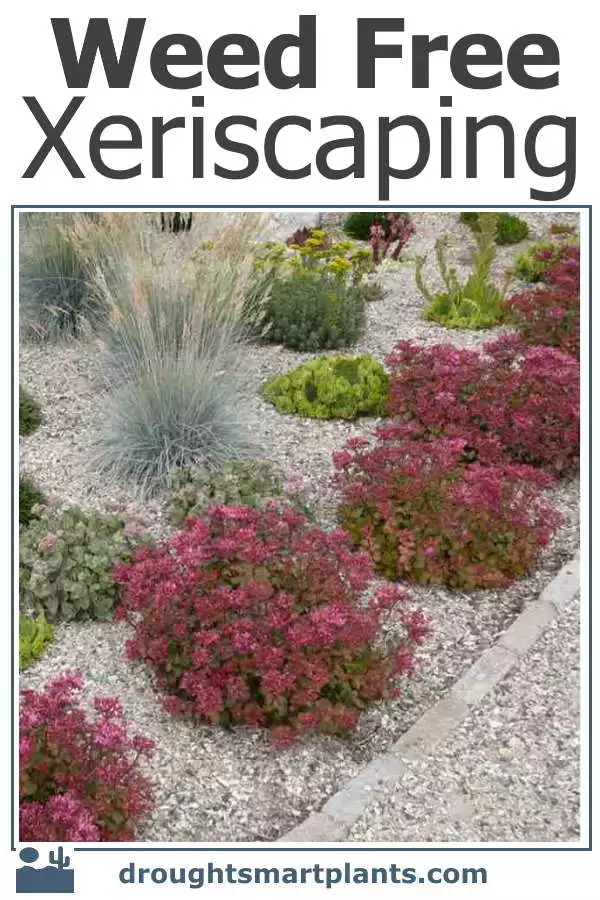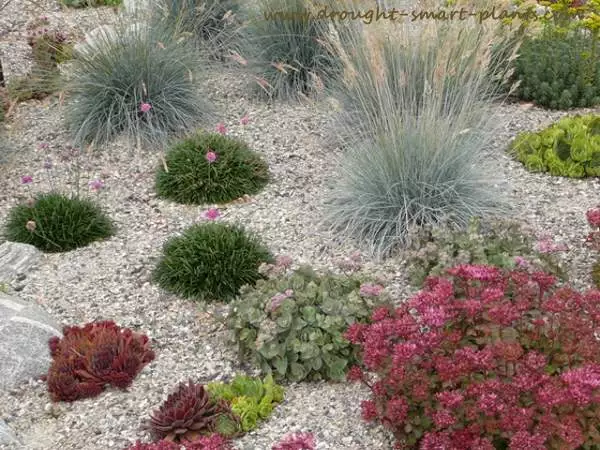Keep your garden clean, and dry
As an Amazon Associate I earn from qualifying purchases.
Other links on this site may lead to other companies that I’m associated with.
Xeriscaping with native plants and succulents have a distinct advantage to regular gardening; the plants don’t require much water, so weeds generally won’t grow, or at least it will be a half-hearted effort, making them easy to deal with.
Weeds are greedy, so for the best health of plants, it’s better to eliminate them.

The first steps in preparing your ground for a lower water approach will give you a head start against weeds. In some cases, you will be completely removing sod or turf, which is where a lot of weed seeds will be found.
Compost this, stirring it often, or covering the pile with plastic or cardboard to block out the light. I would give a compost like this several years to completely finish breaking down. Then you can use it for a new bed, or plant right where it sits.

Alternately, you might want to use a method that is not so labor intensive; lasagna beds.
Or purchase plastic bags of soil and spread them out where you want to start your garden.
The plastic will kill off the weeds underneath them, then next year, open the bags and rake out the soil, and plant right into it.
No digging necessary.
This process gives you the opportunity to reclaim heavily infested beds from couch grass, chickweed, orchard grass or morning glory with much less of your input; cover the area with a thick blanket of leaves, straw or even hay, water it well, then layer over cardboard or thick layers of several sheets of newspaper.
Over that, continue to add layers of compostable material such as leaves, straw, peat moss, cow manure or whatever you have.
Think of the layers of your garden bed like the lasagna. Don’t mix these up and any weed seeds will stay covered, preventing them from germinating.
Have a look at this option too; solarization.
If your xeriscaped area has been in place for a few years, and is starting to get weedy, this will indicate that you are either overwatering it (weeds will grow the healthiest if they get adequate water) or you don’t have enough mulch.
In organic mulches, such as sawdust, wood chips or bark, weeds will find this the perfect bed to start their young.
I prefer an inorganic mulch such as lava rock or pebbles, which are less hospitable.
In really badly weed infested areas, you may want to either rake up any mulch, lay down sheets of newspaper or cardboard and reapply the mulch, or simply lay the sheets down on top the existing mulch and add another layer.
You don’t even need to pull the weeds first – plants need light to grow so if you cut that off, you’ll kill the weed.
Plant thickly so that the plants themselves shade the soil and choke out the undesirables.
Reevaluate your watering schedule. If you have underground irrigation with pop up sprinklers, maybe you can change those to drip irrigation so that you’re just watering the plants, not the areas between.
Get your xeriscaping started
Here are a few products that I’ve found very helpful over the years. When I first started gardening this way, there were very few ways that didn’t require lots of digging and hard labor.
Since then, I’ve found a few simpler options, including these;

